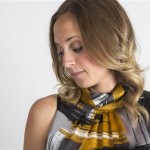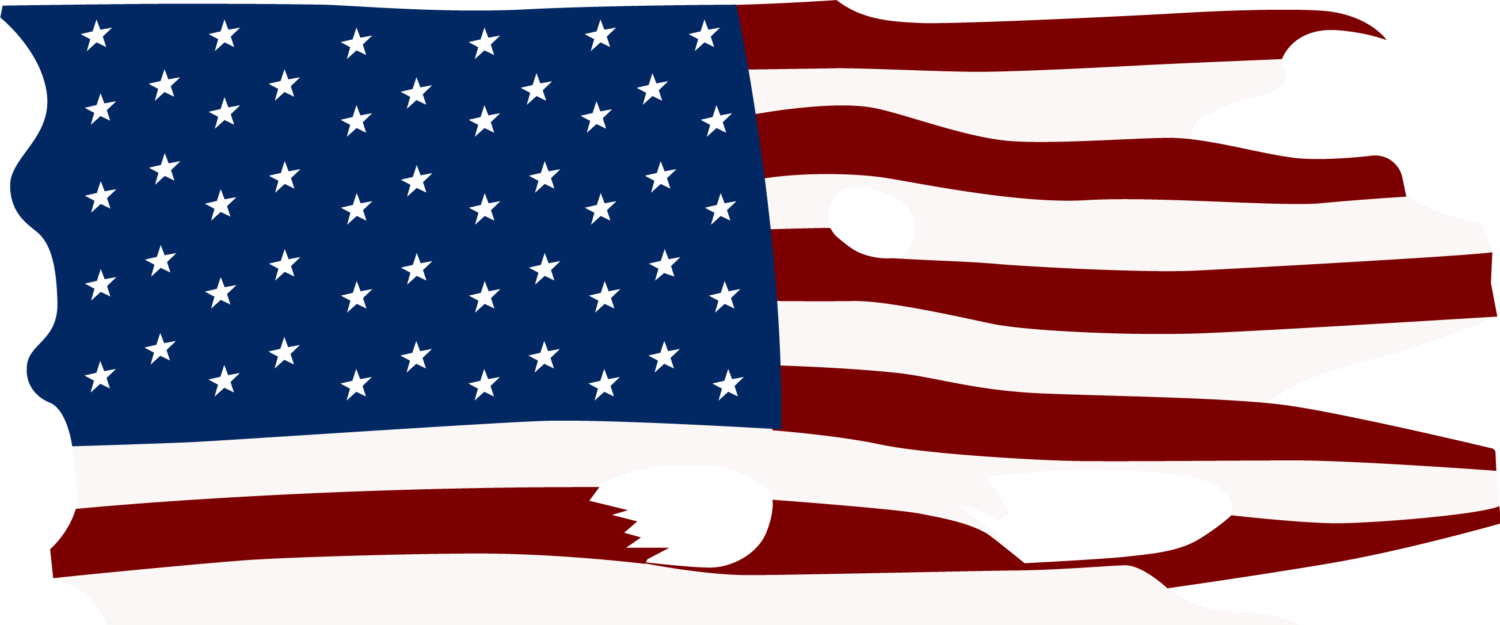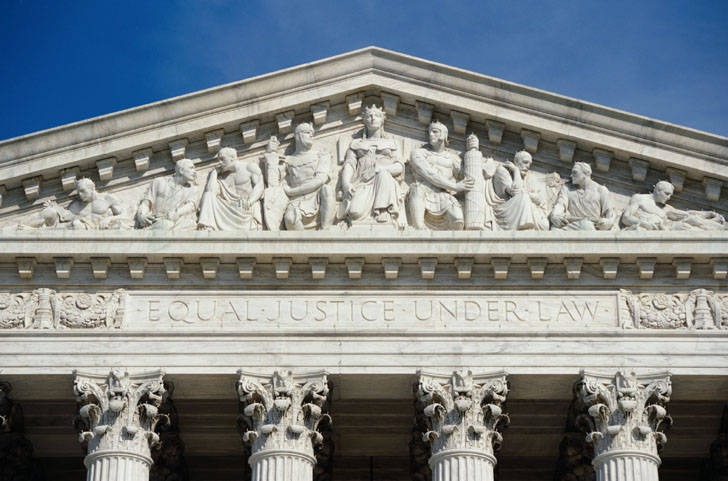BY RAUL HERNANDEZ
Notebookventura@yahoo.com
The United States Supreme Court in several cases has made it crystal clear that the media and the public have a constitutional right to attend trials, including jury selection.
Apparently, some of the security guards, federal employees, court staff and and even judges haven’t gotten the memo yet about Supreme Court decisions on the 4th and 6th Amendments of the U.S. Constitution, which was adopted in 1789. And that is very alarming.
In the Richmond Newspapers vs. Virginia 1980 case, the U.S. Supreme Court justices said the media and public have a constitutional right to attend trials. Adding that trials must be open to public access unless there is a compelling reason in closing them, and only after a hearing concludes that no other means exist to protect the defendant’s right to a fair trial.
There are benefits in having the public attend open trials, the Supreme Court said in the Richmond Newspapers vs. Virginia case: public confidence is enhanced in the judicial system; the public serves as a watchdog against abuses; public trials promote the truth finding process and helps achieve a community catharsis following a serious crime.
“Where the trial has been concealed from public view, the unexpected outcome can cause a reaction that the system at best has failed and at worst has been corrupted,” wrote Justice Burger in Richmond Newspapers v. Virginia case.
The United States Courts web site also welcomes and encourages visitors to its courthouses.
“With certain very limited exceptions, each step of the federal judicial process is open to the public. Many federal courthouses are historic buildings, and all are designed to inspire in the public a respect for the tradition and purpose of the American judicial process,” according to court officials.
“An individual citizen who wishes to observe a court in session may go to the federal courthouse, check the court calendar, and watch a proceeding. Anyone may review the pleadings and other papers in a case by going to the clerk of court’s office and asking for the appropriate case file.”
But some courthouse security guards are still in the dark about the Supreme Court decisions. Some are rude, unprofessional and unfriendly as soon as a person enters the the building to go through the metal detectors.
Sometimes, people don’t even have to step inside before they are approached and confronted for taking photographs of the courthouse while standing on the sidewalk, which isn’t against the law.
If some federal courthouses are historic buildings like the old El Paso federal courthouse, as the United States Courts web site states, then why can’t photographers take photos of these courthouses while standing on the sidewalks.
Well, they can but those charged with enforcing the law either ignore or are ignorant about it.
Last year, a man was arrested for standing on the sidewalk taking photographs of the Phoenix federal courthouse. He was immediately released after a U.S. attorney found what he was doing wasn’t illegal.
In the digital age, some courthouses forbid cell phones inside the buildings. The problem is a person, sometimes, won’t know this policy until he gets tries to get inside. Then, the individual has to walk a block or more to toss the cell phone inside his vehicle.
One security guard in Utah is enforcing a dress code that is apparently only posted inside his head.
No Shoes, No Shirt , and huh, No Jacket to Cover Shoulders – No Access
In Ogden Utah’s District Court last month, a security guard stopped a Standard-Examiner’s justice reporter Morgan Briesmaster who was showing her shoulders. She had to return to her office where the only jacket lying around was a winter coat so she can get into the courtroom.

Briesmaster’s editor, Andrew Howell, said he couldn’t find a dress code for the courtroom anywhere.
How many people have been turned away from the courthouse at Ogden, Utah for exposing their shoulders or other sexually erotic parts of their bodies?
In Ventura California, the Hall of Justice, where the Superior Courts are located, looks like a day at the beach on most days. The only thing missing are the large umbrellas and the ice chests.
People show up with cutoffs with midriffs showing, halter tops, shorts, pant belt lines that look like they are near the knees, flip flops, T-shirts and a collage of tattoos on many bodies along with some nose and ear rings.
Seriously, Ms. Briesmaster would have been overdressed in the land of Sun, Sand and Surf.
The judicial proceedings in Ventura, however, are orderly and efficient.
Also security at the courthouse, which is handled by the Ventura County Sheriff’s Department’s deputies, is second to none. I’ve seen nearly a dozen deputies go through a courtroom doors in less than a minute after a jail inmate got out of hand during a hearing. These guys are good with response times.
I use to tell people that the Ventura courthouse was the safest place in the county.
Courthouses should post dress codes or other policies at the entrances or on the web sites before they start barring people from entering and denying them a constitutional right to be there. There should not be any surprise about what is appropriate and inappropriate attire inside a courthouse when they get there.
Everybody within a stone’s throw of the federal courthouse in El Paso, Texas was aware of Honorable Judge Lucius Desha Bunton III’s dress code.
Welcome to Judge Lucius Bunton’s Courtroom – No Coat, No Tie – No Problem

Judge Bunton, who had served as a private in the infantry in World War II, had two strict rules for his courtroom: For lawyers, be prepared and keep the legal BS to a minimum, and everyone had to wear a coat and tie when you walked into this courtroom – no exceptions.
Everyone complied and respected that rule. There were no problems.
Most were also aware of the existence of Bunton’s clothes closet located in a courthouse conference room. One day, I found myself rummaging like a homeless man sorting through some thrift store knock-offs, looking at a row of old coats and a box with a snake-like pile of old rags that were being passed off as ties.
I forgot my coat, and I was pointed to the closet.
When working as a newspaper reporter for more than 30 years, I always wore a coat and tie when I went to cover the courts.
But that day, nearly two decades ago, I went to lunch and forgot to take my coat because I didn’t expect to go to any courthouse. But when I learned that a key witness in a drug case was going to testify at Judge Lucius’ courtroom, I hurried to the federal courthouse.
I knew most of the U.S. Marshals.
They were very professional, friendly and oh yeah, they loved to pull my chain – one time during a court trial, one of them, who was sitting in back of me, secretly latched the strap of my briefcase around the leg of a bench as I took notes. I got up, grabbed the briefcase and got yanked back – muffled laughter by a couple of Marshals.
But they weren’t about to give me a pass on the coat- and tie- edict. They were as hard nose as those “no shoes, no shirt, no service” restaurant owners.
I enjoyed going to Judge Bunton’s and other courts. Courtrooms can often become some of the most fascinating places on the planet.
People who go there will learn about the law, about people’s lives, how things work or don’t work or watch the array of facial expressions and emotions on the witness stand. It is inspiring when you watch a brilliant lawyer argue his case in front of a jury box. It’s also amusing when a bumbling idiot with a law degree makes a fool of himself and draws snickers from jurors or gets a tongue lashing from a frustrated judge.
Judge Bunton’s Court Was the Frosting on My Judicial Cake.
Bunton had a great sense of humor and a razor -sharp wit. He sometimes mocked and prodded mundane attorneys with his tongue-in-cheek humor.
Even the judge’s courtroom stationary had his personality stamped on top of it: “Rocket Docket” was marked on top of the courtroom’s letterhead because of the speed he dispatched court cases. Along with being efficient, he was very fair in his decisions.
The judge, who is now deceased, would occasionally pepper his rulings with humor, occasionally, it would show up in his judicial writings.
Judge Bunton wasn’t afraid to make tough decisions.
In 1989, in a high-profile trial, the judge ruled that the FBI discriminated against its Hispanic agents, more than two dozen were listed as plaintiffs in the lawsuit against the agency.
The FBI ruling was a national story. It didn’t matter. Judge Bunton dismissed the criticism. He said he understood that it was an unpopular decision. But he believed that making unpopular decisions, getting criticism and making some folks unhappy came with the territory.
Go Get a Coat and Tie or Stay Out
Nonetheless, a coat and tie were required to watch Bunton’s Rocket Docket, no exceptions – none.
As a courtesy, however, the judge kept the federal courthouse’s lone coat- and tie- closet for people who forgot to bring one or both. The other judges in the courthouse didn’t require a coat and tie in their courtrooms.
The day I forgot my coat I found myself rummaging through the odd conglomeration of outdated rags that were inside a large cardboard box. in But it was even more painful fingering through a collection of brightly colored old coats hanging in the closet knowing I had to pick one.
I had to make a choice. What would go with my dark blue tie with a diamond pattern? Seriously, who would care?
Then, a thought popped up followed by a wicked grin as I stared at a fire-engine-red sports coat that could only fit a Sumo wrestler. A Cheshire grin – okay, let’s play.
I put on the coat. The ends of the coat sleeves were about three to four inches from the tips of my fingers. It looked like a battered, red bathroom with a black, breast patch of what looked like two fading lions with silver-lined heads facing each other.
As soon as I walked through the courtroom’s double doors, the judge lowered his head. His eyes peering over the eyeglasses on the tip of his nose. A few jurors smiled, and one nudged the other. A Marshal stared, grimaced and mouthed a curse.
Judge Bunton smirked but didn’t miss a judicial beat and continued the trial.
I quickly regretted forgetting to bring my coat – Judge Bunton or his staff apparently had these coats cleaned once I year, if that. Judging by the smell, there were others who had also forgot their coats. The coat stunk, and the smell clung to my clothes after I took it off and walked out of the courthouse. I went straight to the trunk of my car, tore into my gym bag, took out a can of Right Guard and used it on myself like a fire extinguisher to put out the odor.
I learned my lesson. I kept a spare coat and tie in the backseat of my car just in case.
Bunton’s coat and tie standards were understandable. He didn’t exclude people from his courtroom for showing up without a coat or tie. The violators were pointed to the judge’s closet of rags and smelly and crumbling coats.
There were no problems. Everybody had access to the courts as the Supreme Court intended.
A Judge Can’t Kick the Public Out of a Courtroom During Jury Selection
The Supreme Court justices also made it very clear that a judge can’t kick out the public during jury selection simply because a courtroom is too small to accommodate both potential jurors and the public.
In the 2010 Presley vs. Georgia case, Supreme Court justices ordered judges to make room for the public during a trial, including finding seats so people can sit and watch prosecutors and defense lawyers pick a jury.
The judge had told a criminal defense lawyer that her courtroom was too small to accommodate both potential jurors and a defendant’s uncle.
The judge said:
” ‘Well, the uncle can certainly come back in once the trial starts. There’s no, really no need for the uncle to be present during jury selection… . [W]e have 42 jurors coming up. Each of those rows will be occupied by jurors. And his uncle cannot sit and intermingle with members of the jury panel. But, when the trial starts, the opening statements and other matters, he can certainly come back into the courtroom.’ ”
The defendant, Eric Presley who was convicted of trafficking in cocaine, appealed, citing his Sixth Amendment right to a public trial.
In 2010, the United States Supreme in the case of Presley vs. Georgia agreed with the defendant and overturned Presley’s conviction, noting that the public-trial right is founded in both the Sixth and First Amendment.
The Supreme Court said in its ruling:
“Trial courts are obligated to take every reasonable measure to accommodate public attendance at criminal trials. Nothing in the record shows that the trial court could not have accommodated the public at Presley’s trial. Without knowing the precise circumstances, some possibilities include reserving one or more rows for the public; dividing the jury venire panel to reduce courtroom congestion; or instructing prospective jurors not to engage or interact with audience members.”
Two Years After Presley v. Georgia Decision, Ventura Courts Hadn’t Heard of the Case
Two years after the Presley v. Georgia decision and after being kicked out of courtroom twice within three months, I was told by courtroom deputies in Ventura County that I couldn’t stay in the courtroom during a high-profile case because all the seats would be taken up by prospective jurors.
I told deputies about Presley v. Georgia decision as I walked away, and then, I wrote a column on the Ventura County Star newspaper’s Court Reporter’s blog.
(The judges and lawyers, not the deputies, should have been the ones who made sure the Supreme Court 2010 decision was followed. But, I guess, they don’t keep up with Supreme Court decisions involving constitutional rights.)
I am surprised that a few defense attorneys didn’t asked relatives of the defendants to insist that they remain in the courtroom while a jury was being picked – a conviction would have probably been reversed if the judge had not allowed it.
After the column was published on the newspaper’s blog, Ventura judges started reserving rows of seating for the public during jury selection.
Go To Jail and Shut Up
Is getting bounced out of a courtroom still happening around the nation? Sadly, it is.

Last year, an 83-year-old El Paso District Court judge sentenced a lawyer to 30 days in jail for challenging a judge’s efforts to limit public access to the courtroom, according to a story in the El Paso Times published Wednesday.
“The record is very clear that I was nothing but polite and courteous to Judge Woodard. This was never about me,” Attorney Stuart Schwartz told the Times. “I was speaking up for all those citizens called before Judge Woodard’s court whose constitutional rights to be present in the courtroom throughout the court session were being trampled upon without their knowledge.”
Woodard, who was paid $150,000 retired last week after admitting that he “erred on constitutional” law that requires courts to be open to the public, according the Times.
How many more Woodards are out there?
The Times Have Changed But Some Security Guards and Federal Employees Still Remain in the Dark
Earlier this year, I walked into the federal courthouse in El Paso, Texas. Some of the state judges who I once wrote about while covering the courts in El Paso were now on the federal bench – Judges Phil Martinez, Kathleen Cardone and David Guaderrama.
A security guard who was assigned to work at the metal detector walked right up to me and was immediately confrontational, asking where I was going? I am a court observer, I said. What courtroom I was going to go into?
I politely told him that I was going to watch the court proceedings, and he asked again what court are you going into? I told him I was going up to Judge Martinez’s courtroom and later, to other courtrooms. What courts? I don’t know yet.
A couple of days later when I went into the courthouse and was putting my personal belongings in a container to go back up to the courts, I was asked what courtroom I was going to? I said politely that I was going to watch court proceedings again, and then, another security guard approached and asked for my ID followed by more questions.
Inside the courtroom, more security, more questions. I sat down at a nearly empty courtroom getting hard stares. I went into the hallway, more questions.
I emailed in February the Marshal’s Service’s Internal Affairs Unit to find out whether the repeated questioning of people throughout the building was impeding or delaying or discouraging access by the public to courtrooms in violation of the 4th and 6th amendments of the U.S. Constitution.
I got an acknowledgement that they received my email but I have yet to receive a reply to this and other questions I had asked.
By the way, The Security Guard Information Manual published by the federal government tells security guards how to create a good image.
“A sharp appearance and courtesy will enhance your relations with people. Your professionalism in dealing with the public helps build a good image for your employer and instills a sense of trust in the client agency you protect,” the manual states.
All that looks good on paper but in reality, there are too many people that apparently don’t have a clue of the manual’s existence.

The Federal Government, Courthouse Security Guards and Private Security Firms
In an interview this week, a spokesman for the U.S. Marshal’s Service in Washington D.C., which is the federal agency that handles the contracts with private security firms for courthouse security , said there are 12 contracts for the 12 judicial circuits throughout the U.S. There is a smaller security contract for two offices, he added.
There are five private security firms that service the 13 contracts which go through the bidding process.
The Marshals’ Office is the enforcement arm of the federal courts.
The Marshals’ spokesman insisted that his name not be used. I agreed since this information is for a column and not a hard news story.
The spokesman said being courteous is included the 50 conduct standards for security guards that are spelled out in the contracts awarded to private security firms.
In addition, he said each court or circuits can have its own judicial rules that are weaved into the language of each contract.
Cell phone and other guidelines for entering a federal courthouse should be posted at the entrances of courts, he said. Adding that cell phones could be banned in one courthouse and allowed in another.
The spokesman said the public can complain about unprofessional conduct to the local U.S. Marshal’s Office.
Written agreements are great if both sides abide by the rules and guidelines. But one private security firm thumbed its nose at the contract it signed with the federal government, according to the U.S. Justice Department.
In 2012, a New Mexico-based court security contractor, Akal Security, Inc., agreed to pay $1.8 million to resolve allegations that security guards didn’t undergo authorized firearm qualification testing, according to the Justice Department.
“Companies contracting with the government must be held accountable for the misconduct of their employees,” said Michael E. Horowitz, Inspector General for the Department of Justice said about the case. “We are committed to ensuring that the taxpayers’ funds are spent wisely and in accordance with negotiated contracts and regulations.”
People should hold courthouse security guards, law enforcement along with their bosses accountable for unprofessional conduct by writing, calling or emailing their elected officials or members of the Judiciary Committee or the White House .
American Courtrooms Belong to the People of the United States
The courthouses don’t belong to the judges, security guards, law enforcement or the government. They belong to the American people who have a constitutional right to attend trials and to go inside courthouses without being impeded by intimidation, fear or threats of arrest.
But most federal courthouses have become judicial fortresses – most hallways in federal courthouses look like ghost towns with the only people walking in the hallways are marshals, lawyers, defendants or security guards. Missing are the people that the Supreme Court talks about in their decisions and the U.S. Courthouse’s web site welcomes and encourages to visit the courts and courthouses.
But why would anyone go inside some of these buildings when they don’t feel welcomed or the people who work there are unprofessional and disrespectful and make it difficult just to enter the building.
People have a right to go and quietly sit in courthouses to watch the Judge Lucius Buntons of this world or other justices mete out American justice, warts and all.
One thing that should be included in these contracts with these private security firms should be an iron-clad requirement: Security guard should be friendly, and well-scripted: “Hello, welcome to the courthouse. Please put all your personal belongs inside the container and go through the metal detector. If we can help you locate a courtroom, please let us know. Have a nice day.”
With all the security guards, Marshals and cameras inside and outside courthouses throughout the nation, I wonder how many courthouse cameras and metal detectors were in place and working when Timothy McVey’s evil deed took down the the Oklahoma City federal courthouse in 1995 and took so many innocent lives.
No doubt, courthouse security is necessary. There are too many Timothy McVeys and other lunatics still out there.
But not everybody should be treated as a suspect, and security shouldn’t be at the expense of using the constitutional rights of Americans – that have been confirmed by the nation’s highest court – as doormats.
cc: President Obama – White House

